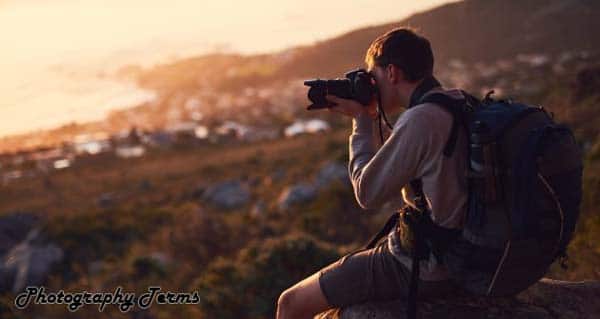12 Basic Photography Terms You Need To Know
New to the world of photography?
Well, you may have come across some strange words you weren’t familiar with. Don't worry! All those technical jargon you read in articles are very common in photography.
If you are a beginner who is aspiring to be an amazing photographer, you need to know some basic terminologies. The user manual can be slightly overwhelming. At times, it might also feel like they are written in a foreign language.
In this article, we have made the task much easier for you. We will cover the 12 basic photography terms you need to know. While there are more than 100 different terms, as a beginner, you have to master the basics first.
Let’s get started.
Table of Contents
12 Must-Know Photography Terms
1. Aperture
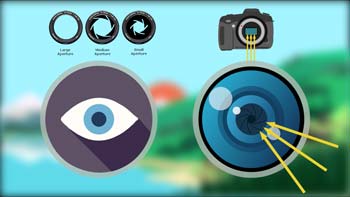
You will probably hear the word ‘Aperture’ a lot if you are new to photography. Aperture is the diameter of the entrance pupil of the lens. You can imagine it as a window. The larger the entrance, the more light will travel into the camera and vice versa.
A wider aperture will allow more light in, this results in a much brighter photo. If the aperture is smaller, the photo will appear slightly dimmer. It is measured in f-stops. When the f-stop is small, the opening of the lens is wide. An f-stop with a larger value such as f/22 has a narrower opening.
Aperture is responsible for determining the exposure of a photo. It also allows you to change the focus of an image. If the aperture is in a narrow setting, it will result in a sharper image, whereas a wide aperture will make the background more unfocused.
2. Shutter Speed
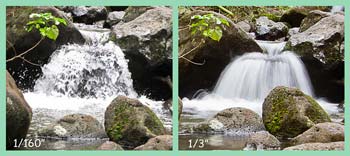
Simply put, shutter speed is how long the shutter stays in the open position. The shutter usually stays open for a fraction of a second to a second. This is the part of the camera that opens and allows light into the camera before the picture is taken.
The longer the shutter stays open, the more light the shutter will let in. If an object moves while the shutter is open, the image will turn out blurred. If the camera itself shakes or moves when the shutter is open, the image will be blurry. That is why most people use tripods for cameras that have longer shutter speeds.
3. ISO

The International Organization for Standardization, also known as ISO, is a setting on your camera that will brighten or darken a picture. By increasing the ISO value on your camera, you will notice that the photos you capture will appear brighter.
ISO can be used to improve the pictures you take in dark environments. The drawback to increasing the ISO value is that it may show grain or noise in the pictures. It is usually ideal to use a low ISO setting when there is plenty of light.
Higher ISO, may increase the noise in your picture, but sometimes they can be used to capture sharp images since it considerably helps in reducing motion blur.
4. Focus
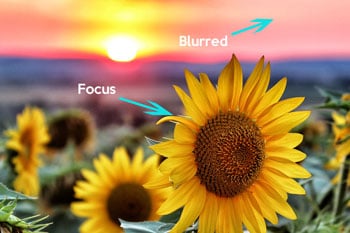
This is another term you will come across quite often. If your eyes focus on an object, all the objects that are far away will appear to be blurred out. In photography, the word ‘focus’ means the same. When an object is in focus, it will appear sharp. Objects that are out of focus will appear blurry.
Focusing on an object can be done manually by adjusting some settings in your camera. Modern cameras have an autofocus feature. By pressing or holding the focus button, the camera will automatically focus on the object.
5. Image Stabilization
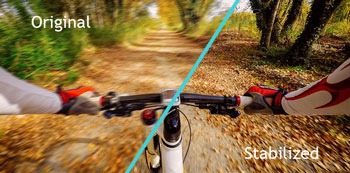
This is an important feature present in camera lenses that reduces motion blur. The lens compensates the pan and tilt movements and stabilizes the image.
Almost all lenses have image stabilization in them. They consist of a built-in gyroscope and other moving parts. A sensor present in the camera will move along with the gyroscope and help achieve blur-free photos. Lenses and cameras have four to six "stop" settings. The first stop equates to doubling the shutter speed.
6. Depth Of Field
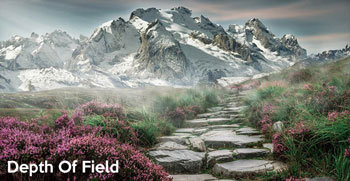
The part of a photo in direct focus is called depth of field. If you are capturing a portrait picture, you might want the depth of field to be a bit shallow. For landscape, the opposite is what you want. Here, everything ranging from the landscape to the skyline will be within the depth of field.
Getting a shallow depth of field is pretty simple. You have to use a large aperture such as an f/2.8 or f/1.4. When capturing the photo of the subject you have to zoom in or get nearer to it.
In order to obtain a better depth of field, you to have to do the reverse. Use a reduced aperture such as an f/11, zoom out, then move slightly away from the subject.
7. Filters

This is a popular accessory that is attached to the front side of a camera lens. They are made from glass or plastic. Filters work by altering the light that gets to the sensor located inside your camera.
Every modern lens has threads on the upper side of the lens. This is used to attach the filters. One of the most well-known filters amongst photographers is called a polarizer. It is a special types of filter that rotate in order to stop light from being polarized.
Filters help is reducing the glare from reflections, and the hazy effect from captures images. There are other filters available for you to purchase. This includes dark filters, graduated, and color filters.
8. Focal length
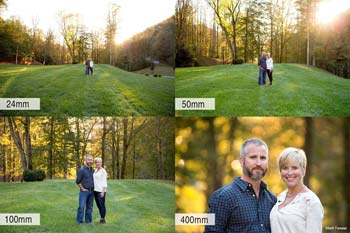
The focal length of a lens is an important term as it tells how much zoomed-in your camera is. It is marked in millimeters. A bigger number means a larger focal length.
On most high-end modern cameras that have large sensors, the focal length can be 100mm or higher. The telephoto lenses used by sports photographers have a focal length of a minimum 300mm. It can be up to 800 mm.
Wide-angle camera lenses usually have a focal length of 35mm, or less. Most wide-angle lenses produced by the top companies have a focal length of 16mm to 35mm.
9. HDR

Compared to our eyes, camera sensors are not that great at perceiving details. If you are capturing a photo of scenery where there is a noticeable contrast, such as dark shadows underneath bright skies, you need to decide between them to capture properly. The other one will be exposed quite poorly.
To fix this problem, a High dynamic range photo is created. An HDR takes two or more photos that have varying exposures. It then blends the ideal sections of the photos together in a built-in software.
Photographers who are dedicated to capturing HDR photos will usually use the camera bracketing feature. This helps them speed up capturing.
Taking HDR pictures fast is beneficial. For instance, if you are capturing a photo of a moving cloud, multiple images of the scenery can be combined together.
10. Prime Lens

These are the type of lenses that do not have the zoom capability. One of the popular prime lenses is the 50mm f/1.8.
Even though the lens cannot be used for zooming and is fairly small, they have multiple advantages. They are compact and improve the overall quality of an image. Most macro lenses you will find are prime lenses.
Using a prime lens, photographers can create effects such as panoramas and cropping. It can take a bit of effort to capture the photos as the photographers have to move in closer or farther back. Even then, most photographers like to go for the prime lens route rather than zoom lenses.
11. Macro

Macro photography is the term used for capturing images of objects up close. Flowers, bugs, and other small objects are captured using the macro mode.
In technical terms, macro photography is an image that is taken at a 1:1 magnification or more. 1:1 magnification means that the subject you are capturing is exactly the same size in the camera sensor as in the real world.
One of the best things about macro photography is that you will be able to capture any small subject and it looks amazing. It is one of those photography techniques that you can do in your backyard.
12. DSLR Camera
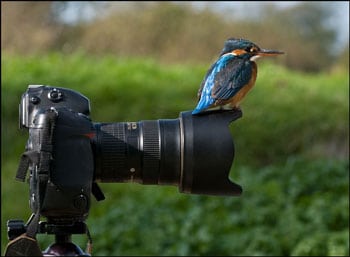
The term DSLR stands for ‘Digital Single Lens Reflex’. When it comes to professional photography, photographers often use advanced DSLRs and mirrorless cameras.
What makes DSLR cameras great is that they have a digital sensor and a reflex mirror. It has an internal mirror that is responsible for directing the light from the lens to the camera's optical viewfinder.
Final Words
The terminologies we mentioned are an awesome place to start. As a beginner, these basic photography terms will suffice. If you go deeper into the world of photography, you will find there are thousands of terms that are more advanced and worth knowing.
Having an advanced camera is just a small part of photography. Knowing the terms properly and making good use of your camera to click awesome photos is what photography is all about.
Now that you know the basic terms, it's time to step into the field. All the best!
Related Blog:
>> Snapfish vs Shutterfly: Which One For Better Service?
>> Top 10 35mm Film For Your Camera

